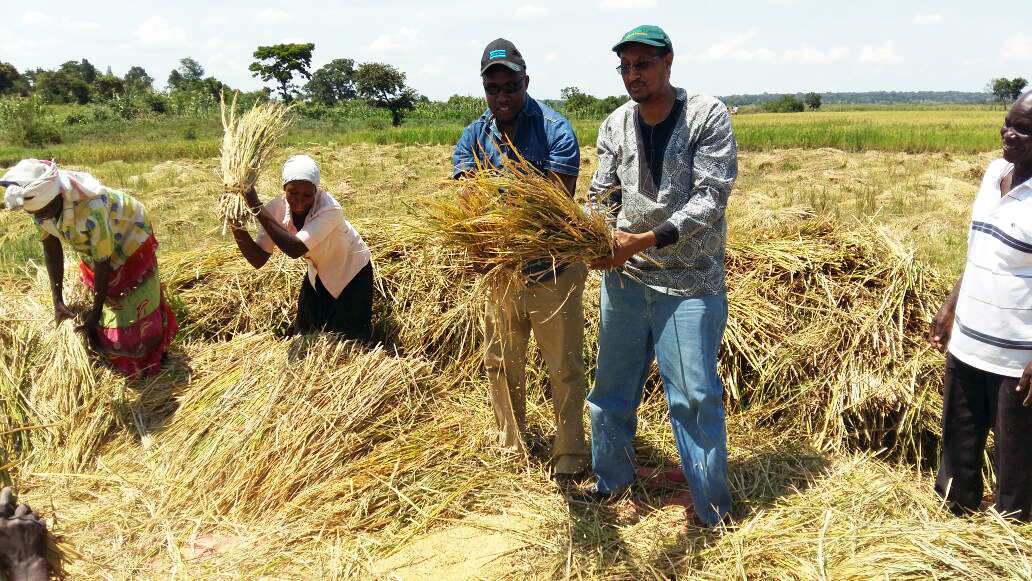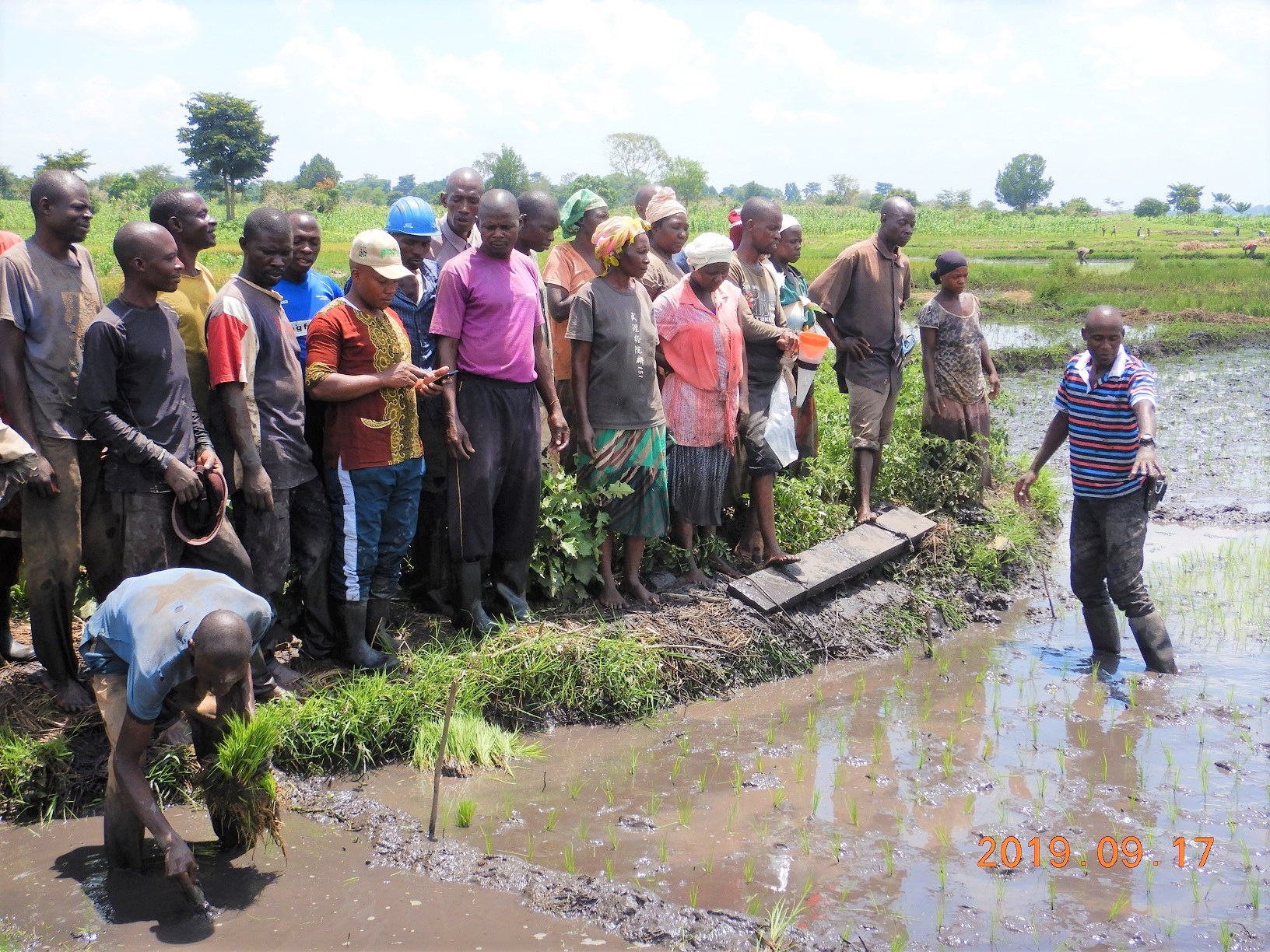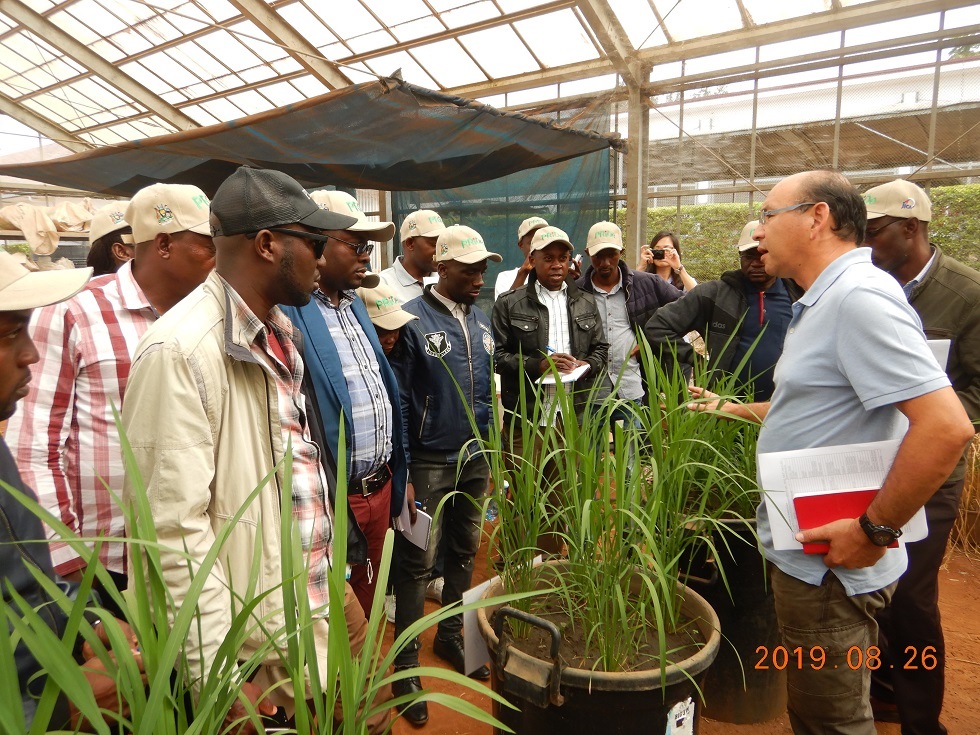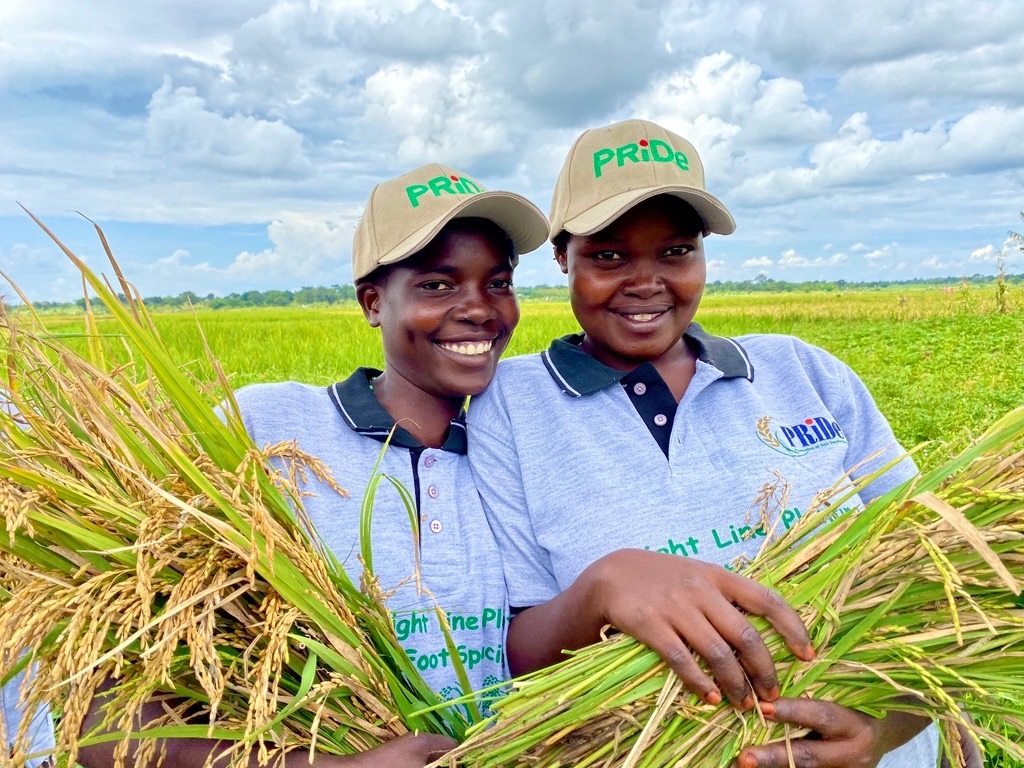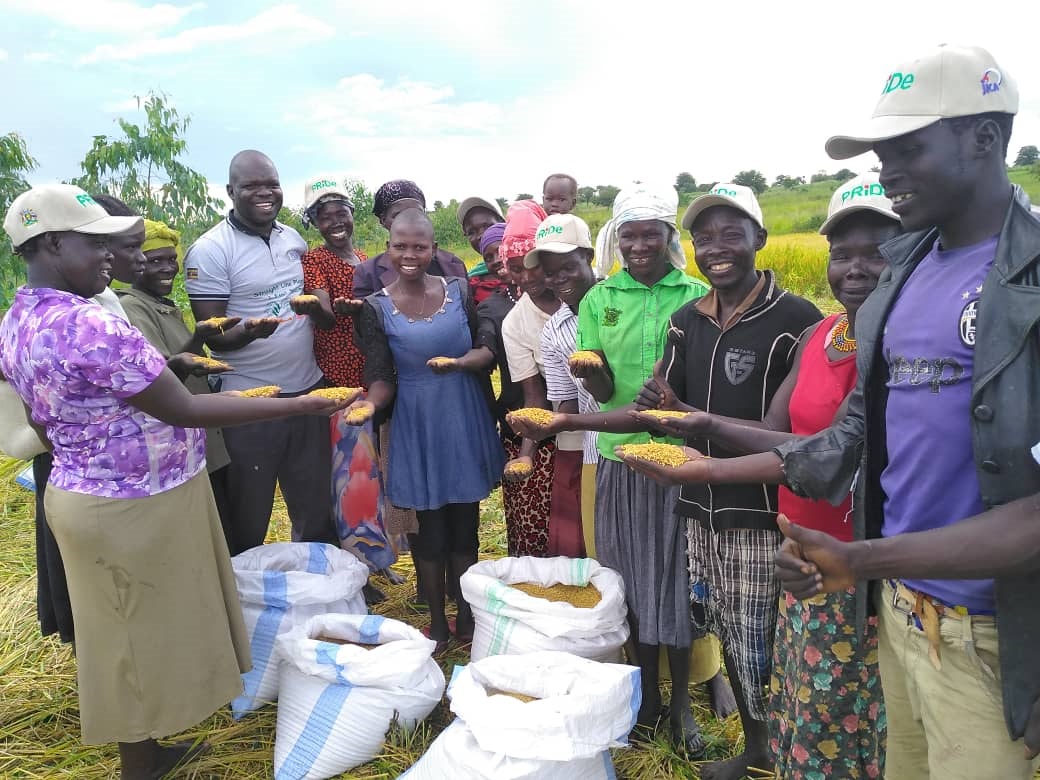The ENRP Project
Project development Objective:
To increase production and productivity, mainly of smallholders rice farmers, by:
- Bringing into productive use 5,500 ha of land brought under protective irrigation,
- Doubling the productivity of small scale producers from a national average of 1.5 tons/ha to 3 tons/ha,
- Facilitating the development of agro-processing and marketing for rice output from small scale producers.
Specific Objectives:
The project is expected to increase production and productivity, mainly of small holder rice farmers, by focusing on those factors that currently limit production which include;
- Addressing key inputs and output bottlenecks,
- Management of water for production,
- Developing producer organizations (POs) with a focus on; creating group cohesiveness and developing business/marketing skills, creating market linkages with buyers and linking them with service providers (for extension, inputs, finance, output, etc)
ACTIVITY IMPLEMENTATION STATUS AT DECEMBER 2017
| Planned Output | Timeline | Status | Remarks on status and achievements (Results) |
| Terms of Reference (TORs) for remaining positions prepared and submitted to IDB | January – March, 2017 | TOR for 7 technical staff was forwarded to IDB for approval in November, 2016 | The last IDB mission has assigned M&E officer to review and send for a no-objection. Consultations with HRM Department will be made. |
| The main 4 staff recruited.· Project coordinator · Procurement Specialist · Project Accountant · M & E Officer Specialist | January- March, 2017 | Salary structure was discussed between IDB mission and MAAIF management on Thursday 9th March, 2017. | Contract signing to be completed by mid-March, 2017. |
| A re-scoping mission conducted. | March, 2017 | A re-scoping mission was conducted from 5th to 11thMarch, 2017. | IDB sent a re-scoping and a pre-launch stakeholder consultation mission to Uganda on the dates indicated. |
| A pre-launch consultative workshop for the project conducted | March 2017 | IDB conducted a pre-launch stakeholder consultation workshop on the 10th March, 2017 at Source of the Nile Hotel, Jinja. | The pre-launch workshop was attended by representatives from central and local governments, development partners, IDB and media. |
| A Draft new Project Appraisal Document (PAD) ready to be submitted to IDB top management for approval. | 20th April 2017 | Each staff given a task to work with IDB towards the production of a Draft new PAD and Project Implementation Plan (PIM). | The interim period March to April, 2017 was used for the preparation of the PAD and PIM |
| Minister of Finance Planning and Economic Development wrote to IDB President on 14th August, 2017 seeking Bank`s position on the project. | 14th August, 2017 | Letter was received by IDB and responded accordingly. | The IDB responded by clearing the project from its red list and confirmed the project is due for funding |
| Project has been approved by IDB and amended finance agreement signed sent on 28thDecember, 2017 through MoFPED for approval and signing by IDB. | 28thDecember,2017 | MoFPED sent the amended finance Agreement to IDB for approval and signing | The IDB approved and signed the amended document |
| Disbursement of 46,200 USD for six months (March-August) towards staff salaries was made. Additional disbursement request of 42,000 USD forwarded to IDB. | October, 2017 | IDB responded by channeling the requested funds to Bank of Uganda- project account | The staff salaries were sent to the different accounts of technical staff. |
| The General Procurement Notice (GPN) was advertised nationally in the New Vision on 8thDecember, 2017 and regionally in the East African on 9th December 2017; internationally in the Development Business and to all embassies of IDB member countries. | 8th December,2017 and 9thDecember, 2017 | Final no object were given by IDB after approval from MAAIF to run in the respective media papers | The adverts were ran in gazette newspapers in the national, regional and international bulletins together with postings at the different embassies of member countries to inform the public about the availability of provision of goods, services and consultancy work. |
| MAAIF wrote to Auditor General (AG) requesting for appointment of Project external Auditors as reflected in the Project Appraisal Document. | 4th December, 2017 | Auditor General constituted the outsourcing committee which came up with selected and approved 5 firms which will be eligible for final selection | The Selected firms have been sent to IDB awaiting for clearance such that they go ahead to solicit for the best bidder. |
| Procurement of six Project vehicles approved by the Minister of Public Service on 20thDecember, 2017. | 20thDecember,2017 | Memo has been written to CAIWAP for specifications | Specifications will be forwarded to the Chief Mechanical Engineer in MWT for clearance. |
| Procurement of Office Accommodation which commenced in August and it’s on-going. | August- on going, 2017 | Contracts committee awarded on condition that the chief government valuer approves basing on the current market rate. | MAAIF wrote to the Chief Government Valuer who visited the premises and we are waiting for report to proceed on the award. |
| Continuous mobilization and engagement of farmers and other stakeholders on-going in the project location area. | January- on going, 2017 | Quarterly meetings are held with different stakeholders in the project location areas | Districts and Farmers have embraced the project activities and welcome continuous dialogue for the smooth running of the project. |
Other projects
- National Oil Palm Project Uganda
- NUFLIP PHASE 1
- The UMFSNP project
- Banana Livelihood Diversification project
- Uganda-China Cooperation
- The ACDP project
- The VODP2
- The ENRP project
- The ATAAS project
- The PISD project
- The RPLRP project
- The MOBIP project
- The Goat Export Project
The Uganda Multi-sectoral Food Security and Nutrition Project (UMFSNP) is implemented, over a period of five years, by the Government of Uganda (GoU) through the Ministry of Agriculture, Animal Industry, and Fisheries (MAAIF) working in a multi-sectoral collaboration with the Ministry of Health (MoH) and the Ministry of Education, Science Technology and Sports (MoESTS)
This project helps to support vulnerable communities in Western Uganda to better adapt to the effects of climate change (CC) through banana value addition activities, to provide greater opportunities for income generation, poverty reduction and food security
The Government of the Republic of Uganda and the Government of the People’s Republic of China have had a cordial relationship for a long time. China has made significant contributions to Uganda’s Agricultural sector development including provision of project aid to Uganda in form of interest-free loans and grants. Notable ones include the Kibimba and Doho rice schemes, Wakawaka Fish landing site, Kajjansi Aquaculture Training Centre, Hydropower Stations and Road Construction. Trade has included leather, coffee, fish and food products among others.
The Ministry of Agriculture, Animal Industry and Fisheries (MAAIF), with support from the World Bank is implementing the Agriculture Cluster Development Project (ACDP). The project arose from the need to implement the Ministry’s comprehensive plan to operationalize the Agriculture Sector Development Strategy and Investment Plan 2011/12 – 2014/15 (now Agriculture Sector Strategic Plan 2015/16 – 2019/20) and in line with the Uganda National Development Plan.
Uganda imports 60-70% of its edible and soap needs; Population growth and rising incomes continue to fuel an annual growth rate of 9% in domestic and regional demand for vegetable oil and its by-products. VODP 2 is Uganda’s strategic effort and increase domestic vegetable oil production, address rural poverty by involving smallholder farmers in oil crops production and improve the health of the population through increased vegetable oil intake.
The project is expected to increase production and productivity, mainly of small holder rice farmers, by focusing on those factors that currently limit production which include;
In 2010, the ATAAS project was developed as an investment in maintaining and raising the level of farmer productivity and household income through the development and adoption of modern farming technologies, techniques and strengthening market linkages. The project had key activities along the research-extension-farmer-market value chain continuum under five components: (1) Developing Agricultural Technologies and Strengthening the National Agricultural Research System (NARS); (2) Enhancing Partnerships between Agricultural Research, Advisory Services and other Stakeholders; (3) Strengthening the National Agricultural Advisory Services (NAADS); (4) Supporting Agribusiness Services and Market Linkages; and (5) Program Management and Coordination.
The Ministry of Agriculture, Animal Industry, and Fisheries (MAAIF) and Japan International Cooperation Agency (JICA) agreed to execute a study for Irrigation Scheme Development referred to as The Project on Irrigation Scheme Development in Central and Eastern Uganda (PISD) through technical cooperation.
The focus was on establishment of medium and large scale irrigation scheme in Uganda targeting farmers cultivating mainly rice in lowland areas with season flooding and unreliable agricultural water source(s). The Study has was entrusted by JICA to the JICA Study Team consists of a consultant from Japan in collaboration with counterpart staffs from MAAIF and MWE. A total of 10 candidate sites districts were studied for irrigation development potential in the districts of Butambala, Buikwe, Kween, Sironko, Bukedea, Bulambuli, Mbale, Butaleja, Budaka and Soroti..
The Regional Pastoral Livelihoods Resilience Project (RPLRP) is a regional project financed by a USD 40 Million loan got by GOU from the World Bank and implemented by three IGAD member states: Uganda, Kenya and Ethiopia.
The RPLRP was prepared within the framework of the IGAD Drought Disaster Resilience and Sustainability Initiative (IDDRSI) and aligned with the Regional Programming Paper (RPP) and Country Programming Paper (CPPs).
Uganda Vision 20140 is a key strategy document for the government of Uganda (GOU) and aims to make Uganda a middle-income country by 2040. The National Development Plan II (NDP2) mentions the development of the livestock sector as one of these strategies, and in particular Uganda’s ability to produce some of the best beef in Africa.
Project Objectives
“To enhance the contribution of the goat industry to farmers’ income and welfare.”
Specific objectives
Avail improved indigenous and exotic (Savannah) goat germplasm to farmers in the project area which will serve as a springboard for establishing a pilot goat export zone in the country
To establish open nucleus breeding herds coupled with systematic cross breeding programme for generating meat goat types for fattening and
Improve the goat management systems and create sustainable supplies of quality goats for internal and export markets.

